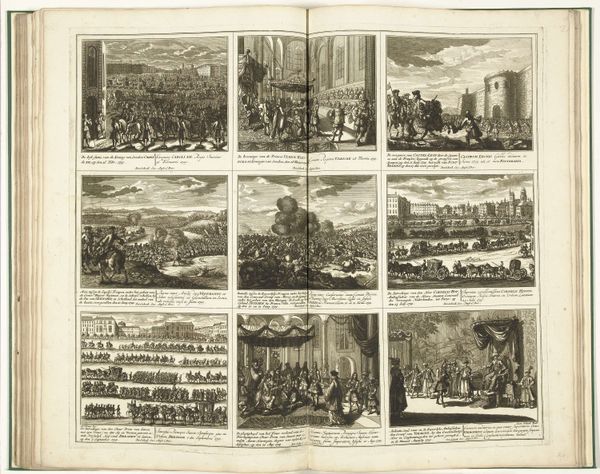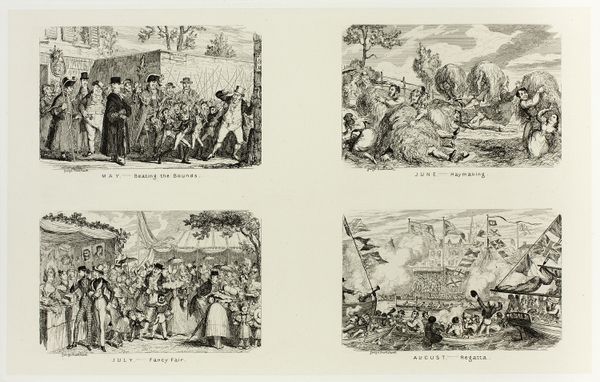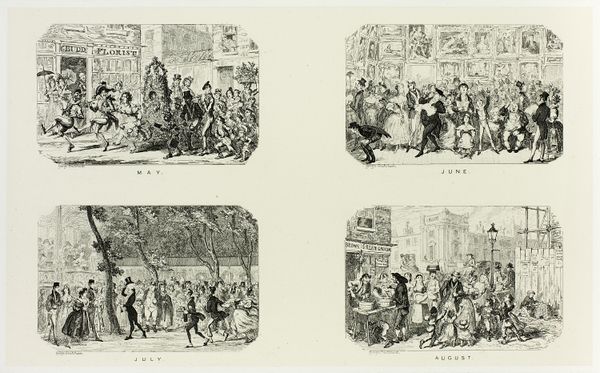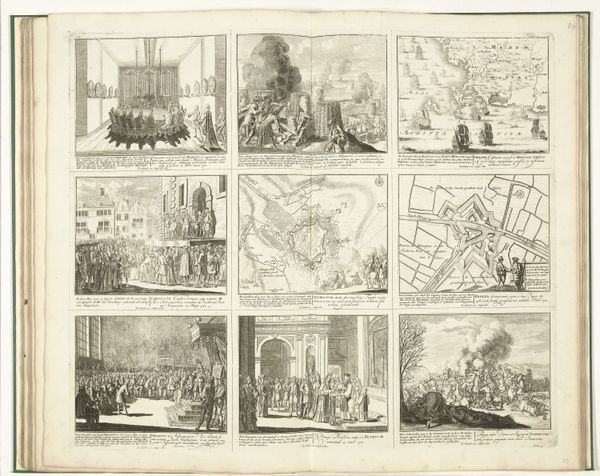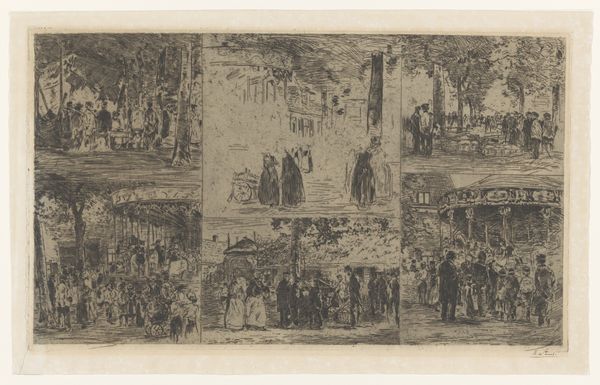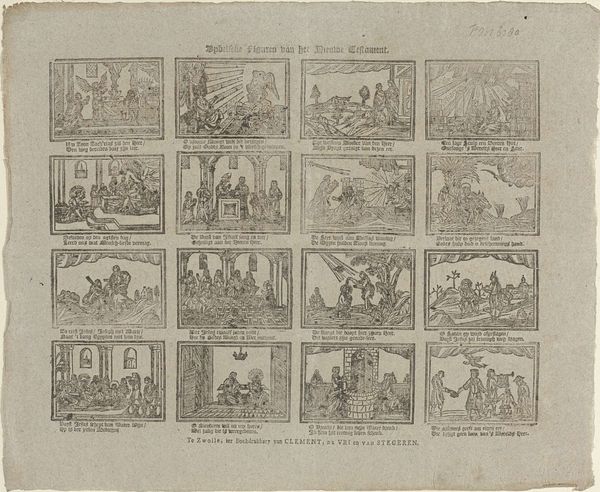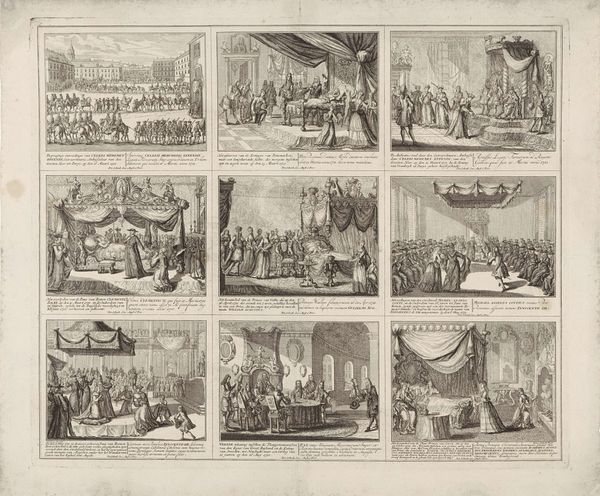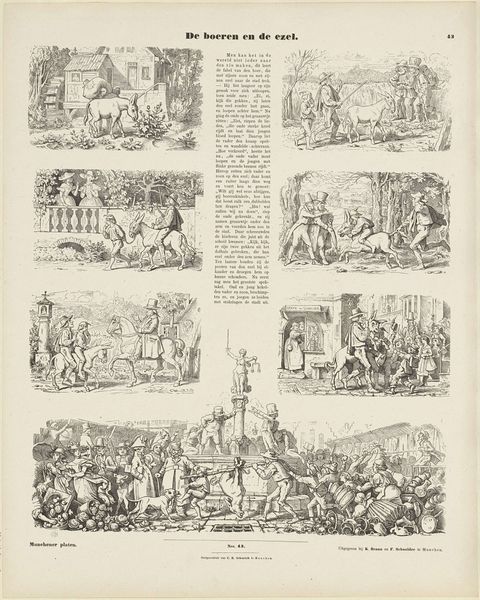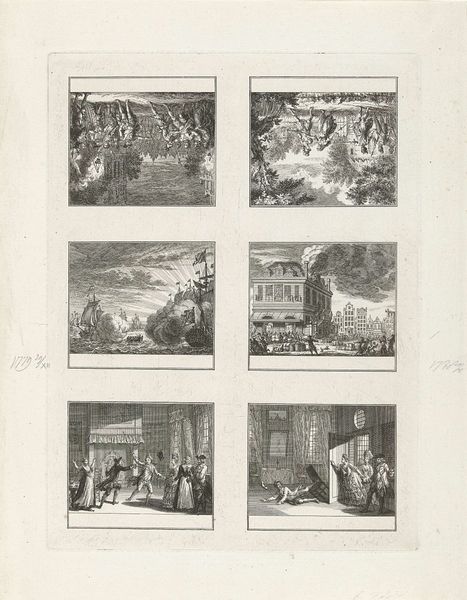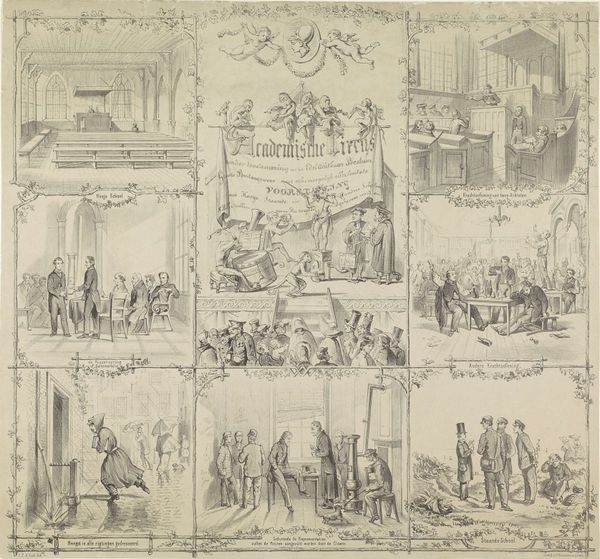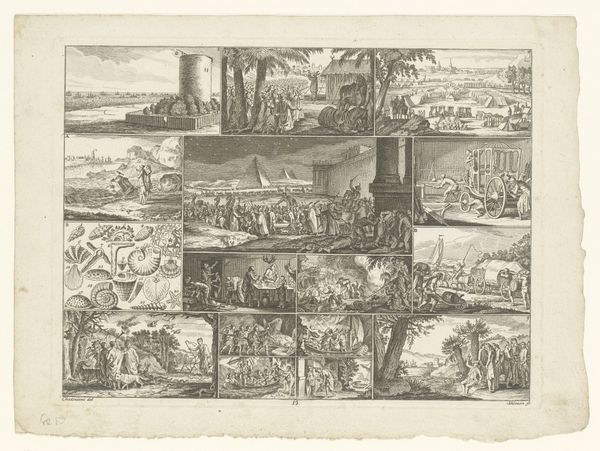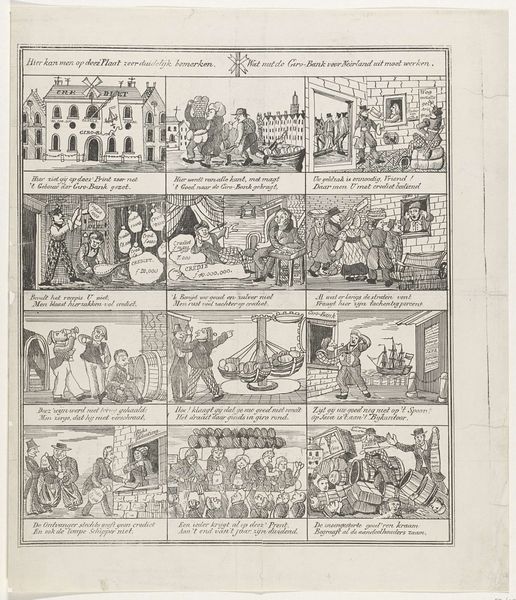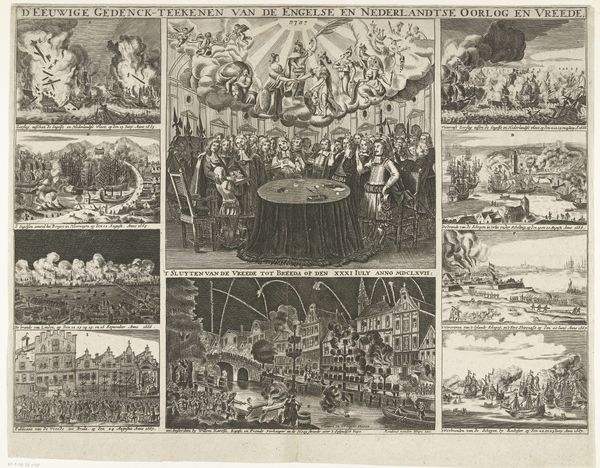
Blad met negen voorstellingen van gebeurtenissen in het jaar 1713 van de Spaanse Successieoorlog 1713 - 1720
0:00
0:00
print, engraving
#
baroque
# print
#
line
#
cityscape
#
history-painting
#
engraving
Dimensions: height 480 mm, width 565 mm
Copyright: Rijks Museum: Open Domain
Curator: Pieter Schenk created this detailed print, titled "Blad met negen voorstellingen van gebeurtenissen in het jaar 1713 van de Spaanse Successieoorlog," sometime between 1713 and 1720. Editor: Immediately, I'm struck by the grid-like composition. Nine distinct scenes, all rendered in a uniform brown ink, each trying to convey these complex events. It's a fascinating exercise in visual storytelling under material constraints. Curator: Indeed. Schenk is documenting events of the War of the Spanish Succession, and it’s remarkable how much he packs into each small engraving. He uses familiar iconographic conventions to establish power—the ruler elevated on a dais, the strategic map denoting dominance. It's all about cementing the memory of these events and communicating power dynamics. Editor: It is interesting to consider these prints within their historical material context. These aren't large paintings for a palace, these prints suggest wider consumption; printed images made the news of battles and treaties accessible to a broader, emerging public. Curator: Precisely. And each of these scenes carry loaded symbols. Notice the use of smoke and fire as metaphors for conflict and change. Even in the cityscape depictions, there's an undercurrent of disruption, things forever changed. What about the people in the bottom left image seemingly gazing from a fortified structure, any connection to that specific locale? Editor: It looks as though Schenk's deployed different printmaking techniques within a singular work; these line engravings provided very graphic means of distribution. You could say this is reproducible media intended for popular consumption, a way to engage a larger populace in political developments. Curator: Ultimately, Schenk offers us not just a depiction of battles and treaties, but a window into the psychological landscape of a period grappling with power, succession, and change. These engravings tell tales of both the visible and invisible repercussions of the War. Editor: Right. To see history being packaged into such neat, reproducible blocks…it really exposes how even narratives of conflict can be standardized and commodified through material means.
Comments
No comments
Be the first to comment and join the conversation on the ultimate creative platform.
